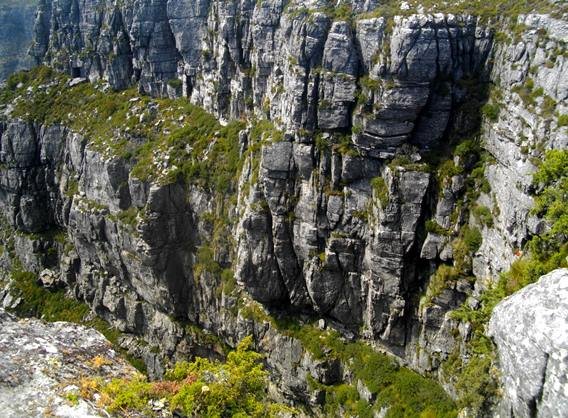Table Mountain sandstone and fynbos

Author: Ivan Lätti
Photographer: Thabo Maphisa
Cape Town is revered as South Africas Mother City, a symbol of the peoples cultural heritage. Table Mountain may be similarly cherished as the mother of the countrys mountains. Exploration of the rich botanical heritage of the region commenced and fanned out from here, a symbol of the peoples natural heritage.
The fynbos-covered sandstone cliffs, slopes and ravines are within easy reach of the urban population. This asset and wonderful benefit comes with the problems of pollution, misuse of the terrain and gradual deterioration from excessive fire and other hazards.
Management of the fauna and flora, as well as safe and controlled usage by visitors pose challenges. Much work has been done and continues regarding the removal of exotic species and management of the Mountain, parks and forests.
The inaccessible parts shelter some rare and vulnerable species, the rocky nooks and crannies adding fire protection and homes for small mammals. More than 100 species of mainly small ground orchids live on the Cape Peninsula mountains alone. More than 100 plant species are endemic to the Peninsula. The ravines, especially those with watercourses are home to a variety of indigenous trees, these days protected but harvested before.
There are signs in recovered underground yellowwood tree trunks and fossilised pollen that more natural forest existed near Cape Town thousands of years ago, maybe similar to what is today still growing near Knysna.
Recovery of the high past standards of natural resources are in some respects out of reach today. Reduction of loss and active conservation focussed on biodiversity are safeguards to be worked for tirelessly in the interests of future human quality of life (Kidd, 1983).

